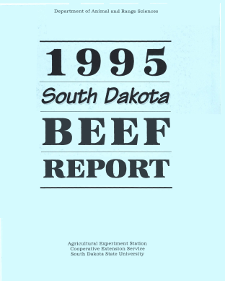Document Type
Report
Report Number
95-6
Publication Date
1995
Keywords
oat hulls, ammoniation, growing diets
Summary
One hundred forty-four steer calves were fed growing diets that contained either 1) 50% ground alfalfa hay (ALF), 2) 25% ground alfalfa hay and 25% ground, ammoniated oat hulls (ALF/GOH), 3) 50% ground, ammoniated oat hulls (GOH) or 4) 50% unground, ammoniated oat hulls (UGOH). Oat hulls were treated with ammonia at 3.3% by weight and enough water to raise the moisture content to approximately 20%. They were allowed to react for 32 days prior to feeding. Daily gains were greater for calves consuming the ammoniated oat hull diets, regardless of form (P<.10). Daily gain differences occurred in spite of the fact that dry matter intake was lower for GOH-fed calves than for the others (P<.10). As a result, feed efficiency was better for the GOH diet than ALF and ALFIGOH (P<.10) but did not differ from UGOH (P>.10). Ammoniated oat hulls, whether ground or unground, are a viable substitute for more conventional roughages in feedlot growing diets.
Number of Pages
3
Format
application/pdf
Language
en
Publisher
South Dakota State University
Rights
Copyright © 1995 South Dakota State University.
Recommended Citation
Birkelo, C. P. and Rops, B., "Ground vs. Unground Ammoniated Oat Hulls for Growing Calves" (1995). South Dakota Beef Report, 1995. 7.
https://openprairie.sdstate.edu/sd_beefreport_1995/7


